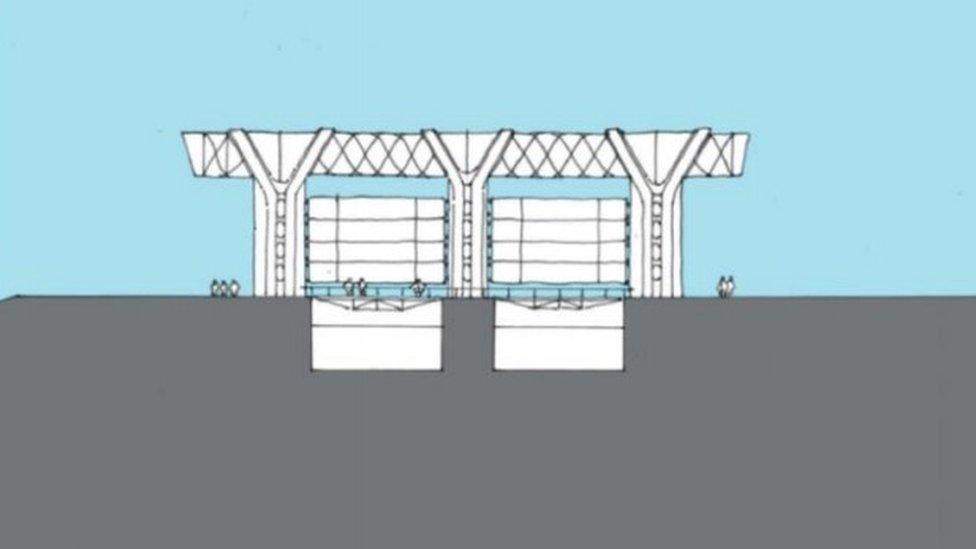Major flood prevention scheme still needs approval
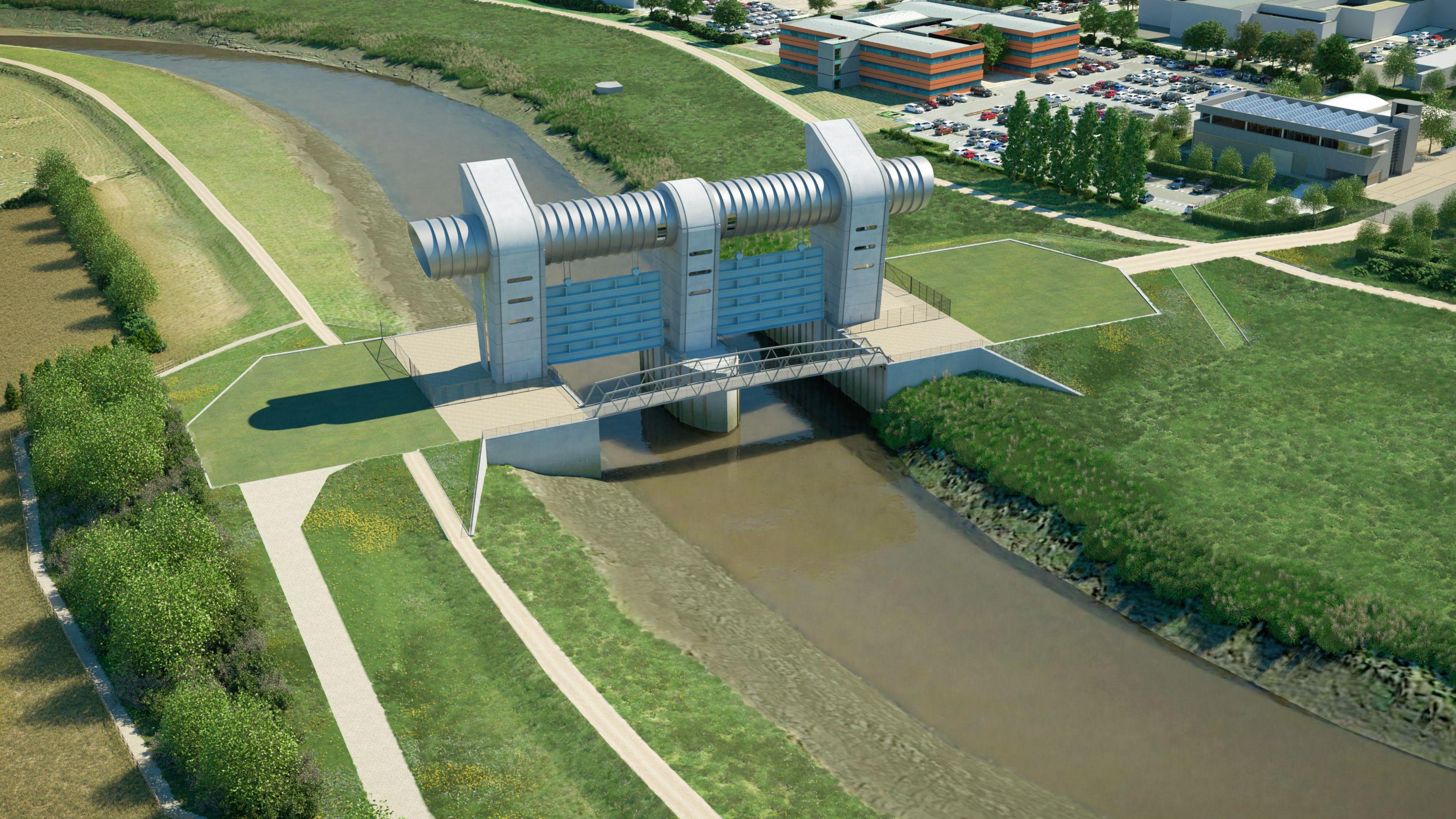
The proposed Bridgwater tidal barrier plan includes pedestrian and cycling access
- Published
The Bridgwater Tidal Barrier, designed to protect more than 11,300 homes, has still not received final backing from the government.
The Environment Agency (EA) and Somerset Council will continue to work on the flood prevention scheme across the River Parrett despite it not being approved.
The EA revealed the project cost had risen to £220m in January after dealing with supply chain issues and high inflation.
The barrier is part of a 20-year action plan in response to the floods that hit the Somerset Levels in the winter of 2013 and 2014.
The barrier is planned to be constructed between the Express Park and the neighbouring village Chilton Trinity.
It will have two 'vertical lift' gates which can can be closed to prevent water from flowing upstream during high tides, which would currently put Bridgewater and the surrounding villages at risk.
One Somerset parliamentary candidate has called for the government to provide the necessary funding.

The Bridgwater tidal barrier site is in the early stages of construction
Claire Sully, who is standing for the Liberal Democrats in the new Bridgewater Constituency and says she was concerned about the project meeting the same fate as the High Speed 2 rail project.
She said: "This is a low-lying area and it is not a question of if floods come, but when they come.
“We need certainty, and the government can give us that by approving the full business case and allocating cash for the project to continue and be finished."
Prime Minister Rishi Sunak cancelled the Birmingham to Manchester section of the rail link in October 2023, and reallocated some of the funding on fixing Somerset’s potholes and the new railway station in Wellington.
The EA said it would continue discussions with the Treasury to ensure the final business case could be approved by early autumn, keeping the completion date for early 2027.
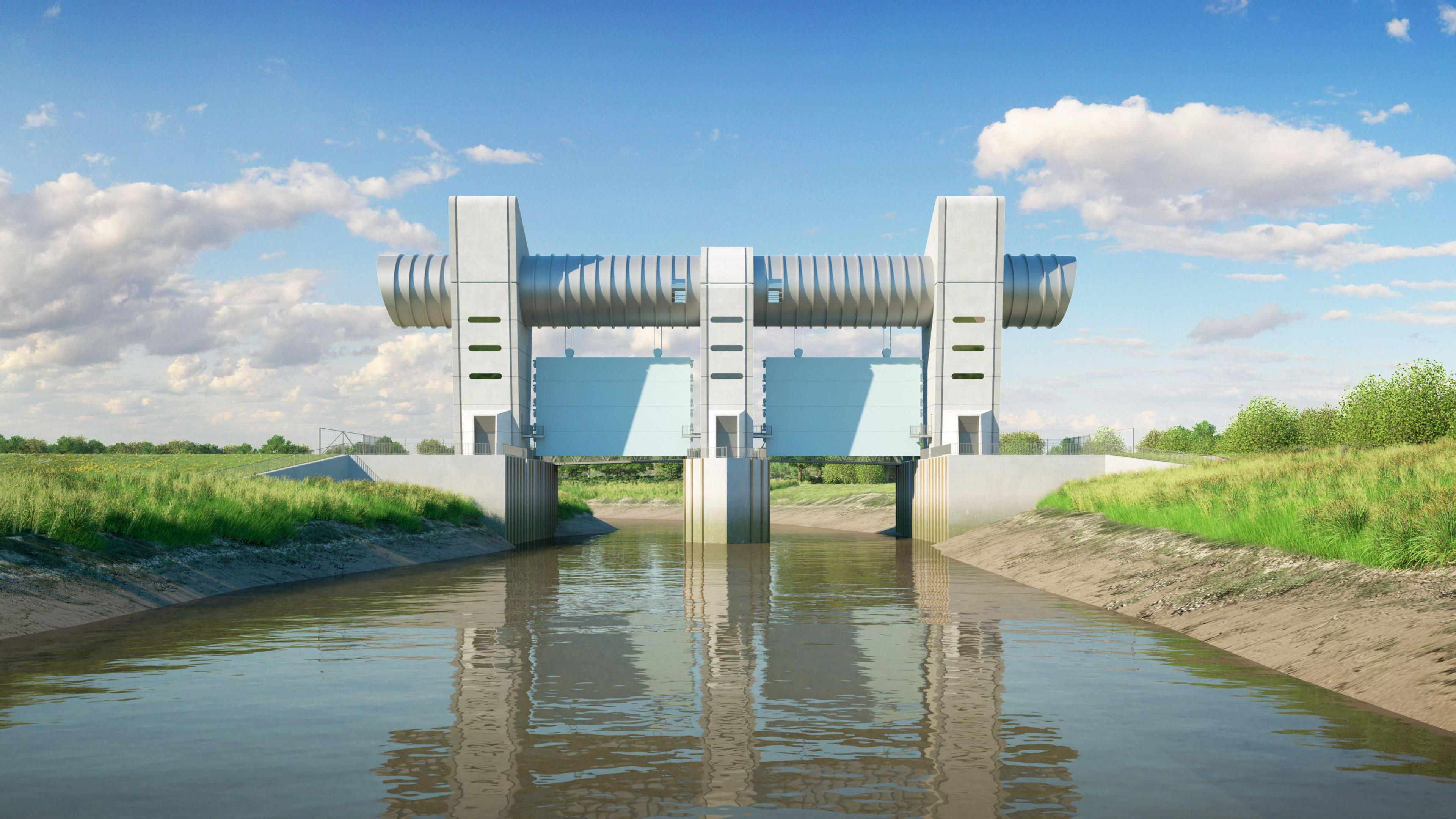
The barrier will provide protection for more than 1,500 businesses
New flood defences will also be created downstream of the barrier to prevent flooding and protect numerous species, including eels and fish.
An EA spokesperson said “We are continuing with our discussions with Defra and the Treasury, and we remain confident that the barrier will secure the necessary funding with the aim to have an operational barrier in early 2027.”
Related topics
- Published15 September 2016
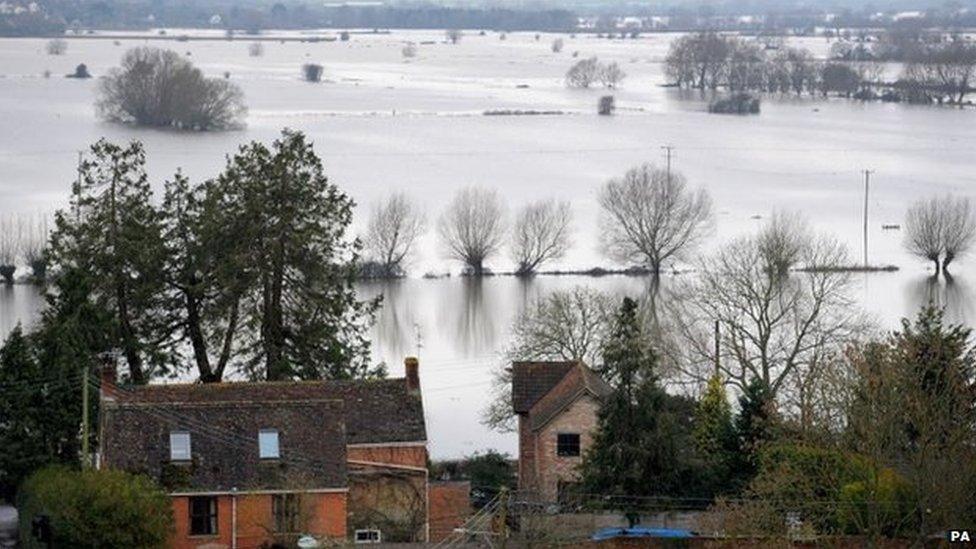
- Published5 January 2023

- Published30 November 2022
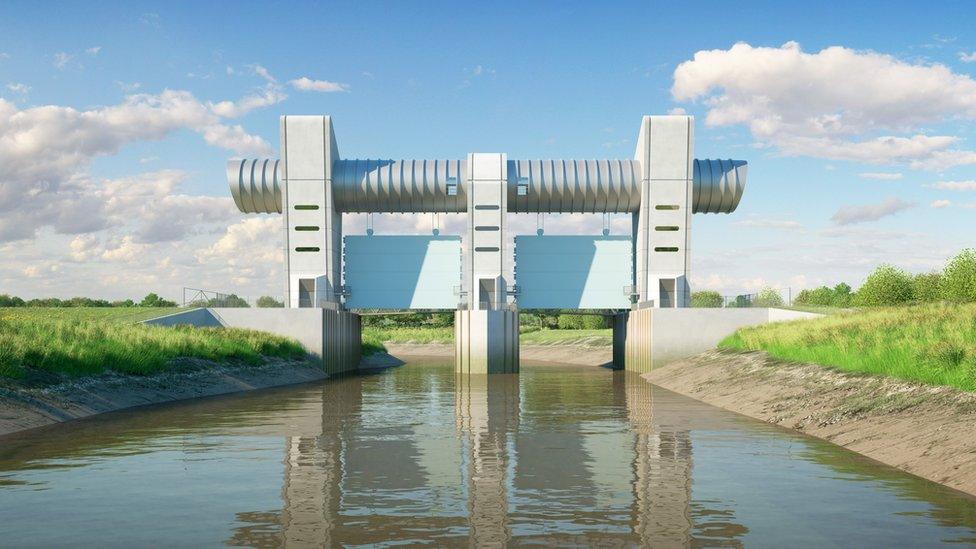
- Published30 June 2017
